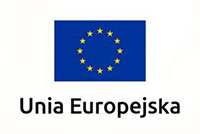TECHNOLOGY
Quality Control Laboratories
Scanning Laboratory
- tomography with model M2 NIKON computer tomograph for cast scanning, equipped with an Xray 450 KV lamp and flat and linear detectors,
- ultrasonic testing using the Olimpus Omniscan SX ultrasonic flaw detector
Strength and metal structures laboratory
- strength tests (Rm, Re, A5, Z, HB, HRc, KCU, KCV), including using the Z250 device produced by ZWICK/ ROELL
- tests of metal structure using a metallurgical microscope with Inverted Metallurgical Microscope ECLIPSE MA100 software by NIKON JAPAN, model ECLIPSE MA 100, NIS-BR software, stroboscopic NICON
- detailed examination of metal structure on the digital VEGA3 LMH scanning electron microscope by TESCAN, equipped with the EDS X-ray microanalysis system by OXFORD Instruments; maximum microscopic magnification 1,000,000x
Chemical composition laboratory
- testing using the Hilger Analitycal emission spectrometer type E980C with the PC-PLUS analytic software, using pneumatic means of transport that enable pneumatic delivery of samples for testing from the OTTO JUNKER furnace directly to the laboratory
- rapid analysis of the chemical composition (30 elements) of the casting material and input materials on:
Measuring laboratory
- optical scanner – model GOM’s ATOS II for casting measuring and casting modeling,
- dimensional tests on 3D LH 87 Wenzel
The moulding compounds laboratory
The following basic parameters of the moulding compounds are tested:
- compressive strength of the moulding compound
- tensile strength of the moulding compound
- moisture content
- compactability
- sieve analysis
- calcination losses
- active clay


